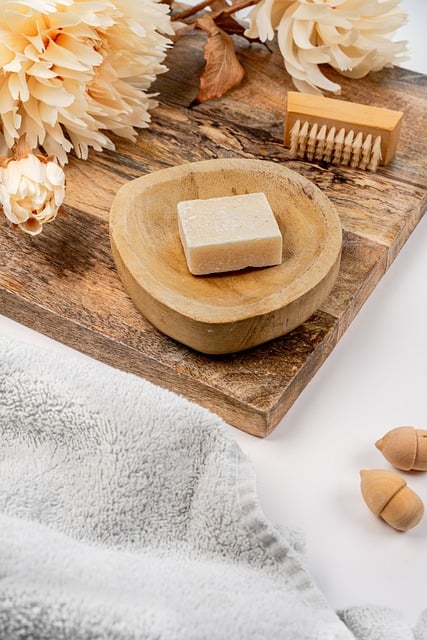Pet odors stem from dander, shed skin cells, urine stains, feces, and bacterial/fungal growth in moist areas, with each pet having a unique odor profile. Effective Odor Removal involves meticulous cleaning, spot treatments, and professional assistance for stubborn cases. For carpet odor removal, pre-treat with vinegar or mild solutions, then use enzymatic cleaners or steam cleaning based on carpet texture and material. Regular maintenance includes frequent vacuuming with HEPA filters, regular pet washing, wiping down surfaces, prompt spill cleanup, enzyme-based cleaners, and regular cleaning of high-traffic areas.
Tired of battling pet odors in your carpet? Understanding where they come from is the first step to effective removal. From animal dander and urine to shedding fur and food stains, this article tackles the various sources of pet smells. We’ll guide you through every aspect of odor removal—from pre-treating carpets to choosing the right products and methods—to ensure a fresh, clean home environment. Learn vital maintenance tips to prevent future odor issues and reclaim your carpet’s freshness!
Understanding Pet Odors: Sources and Types

Pet odors can be a common challenge for many homeowners, especially those with furry friends. Understanding where these smells come from is the first step in effective odor removal. Pet odors are primarily caused by a combination of factors: dander and skin cells shed by your pets, urine and feces stains, as well as bacteria and fungi that thrive in moist environments.
Different types of pets contribute to unique odor profiles. For instance, dogs and cats produce specific chemicals in their sweat glands and saliva, which can leave behind distinctive scents. Additionally, the food they consume and any accidents inside the home further compound these odors. Effective odor removal requires addressing these sources through thorough cleaning, spot treatment, and sometimes, professional intervention for severe cases.
Why Carpet Odor Removal is Essential
Carpet odor removal is an essential part of maintaining a clean and healthy living environment, especially in homes with pets. Pets, despite their adorable nature, can contribute to carpet odors through various means, such as sweat, urine, and shed skin. These odors not only make your home uninviting but can also attract pests and trigger allergies or respiratory issues for family members.
Prompt action is crucial to prevent persistent pet odors from embedding in the carpet fibers. Efficient odor removal techniques, like professional cleaning services equipped with specialized equipment and solutions, can deeply clean carpets, eliminating the source of the smell and leaving them fresh and hygienic once more.
Pre-Treatment: Preparing Your Carpet for Cleaning
Before diving into the process of pet odor removal, proper pre-treatment is crucial for effective cleaning. Start by vacuuming your carpet thoroughly to eliminate loose hair and dander, which can aggravate odors. Using a vacuum with a HEPA filter ensures that allergens and pet particles are captured efficiently, leaving behind cleaner air and a fresh start for the cleaning process.
Additionally, identifying and addressing the source of the odor is essential. If the smell persists after vacuuming, consider blotting the area with a clean cloth dampened with white vinegar or a mild carpet cleaning solution. This step helps to neutralize odors and prepare the carpet fibers for deeper cleaning, ensuring that the root causes are tackled before applying more intensive methods for odor removal.
Choosing the Right Products and Methods
When it comes to pet odor removal from carpets, choosing the right products and methods is essential. Start by identifying the source of the smell—whether it’s urine, feces, or a combination of both—as this will dictate your approach. Opt for enzymatic cleaners that break down organic matter and odors at their source, as they are effective and safe for pets and families. Avoid harsh chemicals that can irritate sensitive skin and leave behind residues.
Additionally, consider the texture and material of your carpet. For deeply embedded odors in plush carpets, a combination of steam cleaning and specialized odor-neutralizing solutions may be necessary. Pre-treating spots with a pet-safe cleaner before vacuuming or steaming can significantly enhance odor removal. Regular cleaning and maintaining good ventilation will also help keep pet odors at bay, ensuring a fresh and clean home environment.
Step-by-Step Guide to Effective Odor Elimination
To effectively eliminate pet odors from carpets, follow this step-by-step guide:
1. Identify and Address the Source: Start by identifying where the odor is strongest. This could be a specific area or a particular type of pet (e.g., dog vs. cat). Addressing the source is crucial for successful odor removal. For instance, if the odor comes from a pet’s bed, wash the bedding in hot water to kill bacteria and remove scents.
2. Pre-treat Stains: Apply a pet odor remover directly to any visible stains. Let it sit according to the product instructions, usually a few minutes. This step helps break down the odor-causing compounds. Use a clean cloth or sponge to gently work the solution into the carpet fibers. Be sure to follow the product directions for safety and best results.
Maintenance Tips to Prevent Repeated Odor Issues
Regular maintenance is key to preventing recurring pet odor issues. Vacuum your carpets frequently using a vacuum with a HEPA filter to capture dander, fur, and loose dirt that can contribute to odors. Wash your pet regularly, especially their bedding, to minimize the buildup of scent-producing oils and debris. Additionally, wipe down surfaces and furniture that come into contact with your pets to remove any residual smells.
Maintain a clean living environment by promptly cleaning up spills and accidents involving your pets. Use enzyme-based cleaners designed for pet odor removal to break down and eliminate stubborn odors at their source. Regularly cleaning high-traffic areas and washing throw pillows, curtains, and other washable fabrics can also help to mitigate odors and keep your home fresh and welcoming.
